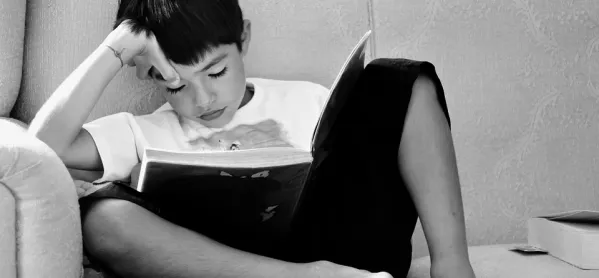- Home
- Boys ARE disadvantaged with education and mental health
Boys ARE disadvantaged with education and mental health

On International Women’s Day, we see columnists and pundits who, thinking they’re making a terrifically insightful point, ask “when is International Men’s Day?”. Unfortunately, this often means I spend at least a portion of any media interviews I do on International Women’s Day saying “19 November” and dealing with my host’s consequent surprise and incredulity since IMD has comparatively little press.
What these pundits fail to recognise is that IMD has been 19 November for quite some years now and the reason they might not know about it is that their colleagues in the media only tend to be interested in bemoaning a lack of equality when in pursuit of attacking feminism.
Yet, in Britain at least, we can see there are certain areas of life where boys and men are, on average, at a disadvantage. These happen to be the two areas I speak and write most often about: mental health and education.
I’ve speculated in previous columns (and will continue to write) about mental health in boys and men and the possible solutions my research points to. When it comes to education, the situation is less clear-cut.
Statistics show boys, particularly if they are working class, falling behind girls in terms of academic attainment. Last week, a piece published in The Telegraph in which it was claimed former Ucas chief Mary Curnock Cook had said the education system was failing to take the “astonishing” underperformance of boys seriously because feminists had made the topic “taboo” caused understandable outrage. Curnock Cook later went on to use examples mainly related to university campuses (eg the scrapping of the UK’s first Men’s Officer) to assert that we should have strategies throughout the education system specifically designed for boys from early years.
On social media, this was branded a dangerous leap, in particular by those who support gender-neutral learning environments. Olivia Dickinson from campaign group Let Toys Be Toys said on Twitter: ”… agree boys’ underachievement has been overlooked but it’s about a whole school approach to learning and stereotypes…no one learns in the same way and it’s lazy and damaging to say boys and girls learn differently from each other.”
Ultimately, this debate comes down to whether you believe average gender differences are socially constructed or inherent. I happen to think there’s an element of both - I believe there are three distinct layers to gender - genetic makeup, hormones, and socialisation - which come together in numerous variables to create lots of unique gender identities. But that’s a column for another day.
In the meantime, I propose to focus on an element of gender difference in which the stats present an irrefutable picture - colour blindness. One in 12 boys are colour blind, compared with only one in 200 girls. Colour blindness has myriad possible consequences for children in terms of their educational outcomes, not least of all when it comes to exam questions (schools are not allowed to “tamper” with exam papers to introduce hatching on maps for geography papers, for example). This could account for at least part of the differences in attainment between girls and boys. I caught up with Kathryn Albany-Ward, founder of colour-blind awareness, who gave me her top tips for teachers wishing to support colour blind pupils:
-
Avoid relying on colour only to make a teaching point by finding an additional way to convey the colour information eg when using red/green/black markers on whiteboards, also use techniques such as italics, bold font, underlining or different font size to enable colour blind pupils to follow the information.
-
Take time to “audit” your classroom by labelling with text or symbols any information, displays or instructions which rely on colour only eg reading book levels, pencil crayons, maps and charts.
-
Colour blindness does not mean seeing in greyscale or confusing reds and greens only. Any colour combinations can potentially be confusing, causing issues at all ages and across the curriculum but especially in Stem subjects, humanities, MFL and sport. Check all resources/equipment before use, adapting them if necessary.
-
Check students’ work for “obvious” signs of colour blindness eg purple sky/rivers, odd use of Christmas colours such as brown tree/Santa, confusion on maths worksheets where instructions rely on colour, such as “colour the largest number in red” or “express the number of blue balls as a fraction”. If you think a student might be colour blind advise their parents to take them to an optometrist for a colour vision test.
-
Although statistically speaking there will be one colour blind child in every co-ed class, they are unlikely to be diagnosed. Start by asking all parents to advise the school if they have a colour blind child and instigate a screening programme in school so that you can identify all the other children affected.
It’s just one step, but while the gender-in-education debate rages on, it’s one we can be sure has benefits for significant swathes of children.
Natasha Devon MBE is the former government mental health champion. She is a writer and campaigner and visits an average of three schools per week all over the UK. She tweets @_natashadevon. Find out more about her work here
Keep reading for just £1 per month
You've reached your limit of free articles this month. Subscribe for £1 per month for three months and get:
- Unlimited access to all Tes magazine content
- Exclusive subscriber-only stories
- Award-winning email newsletters


